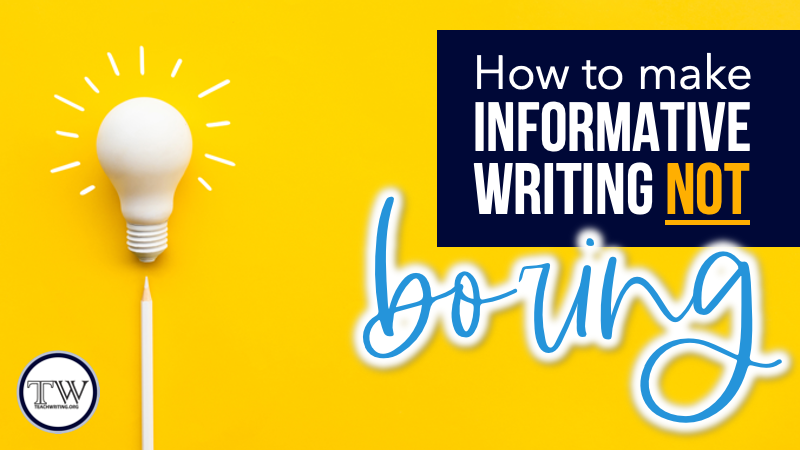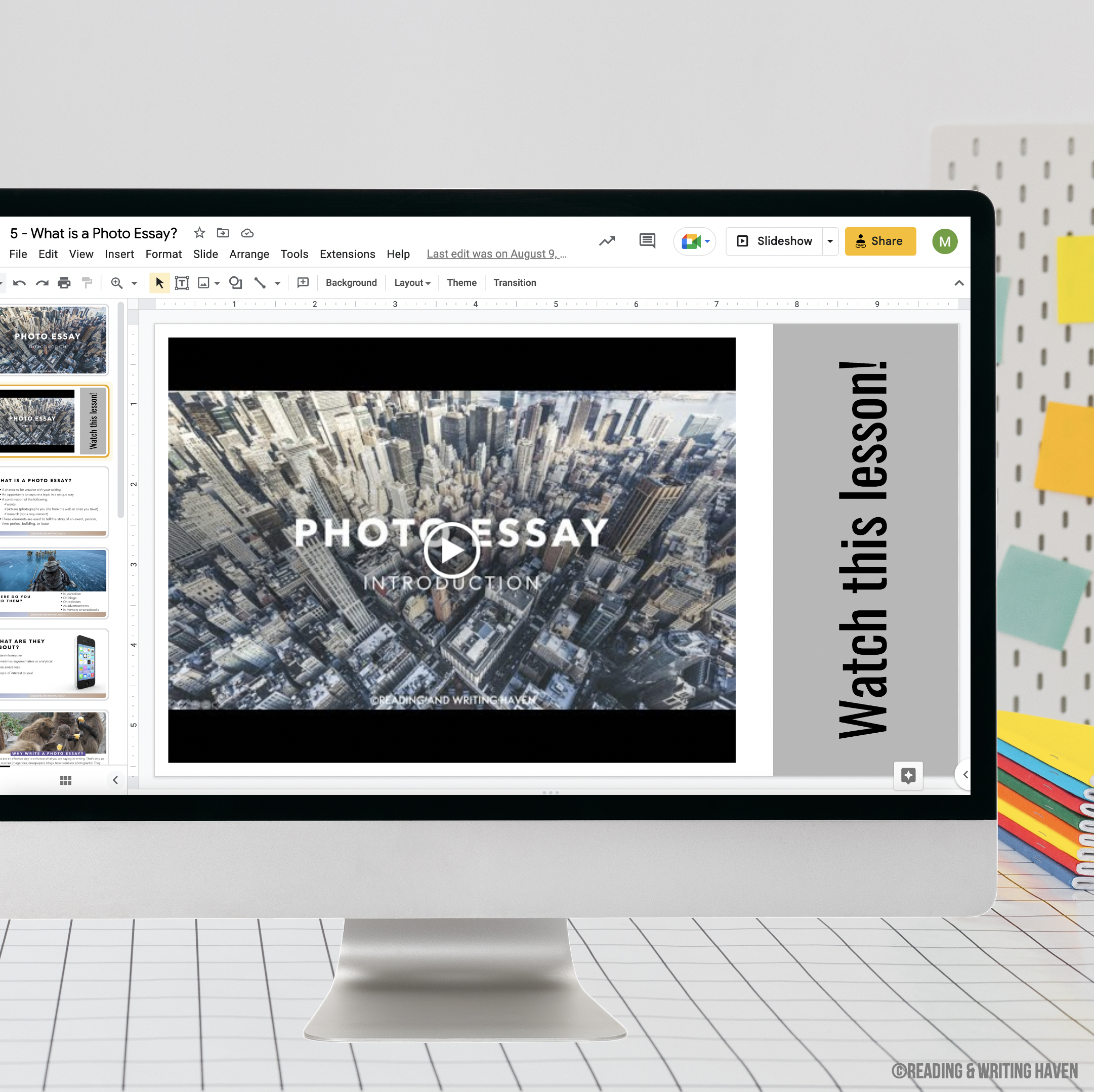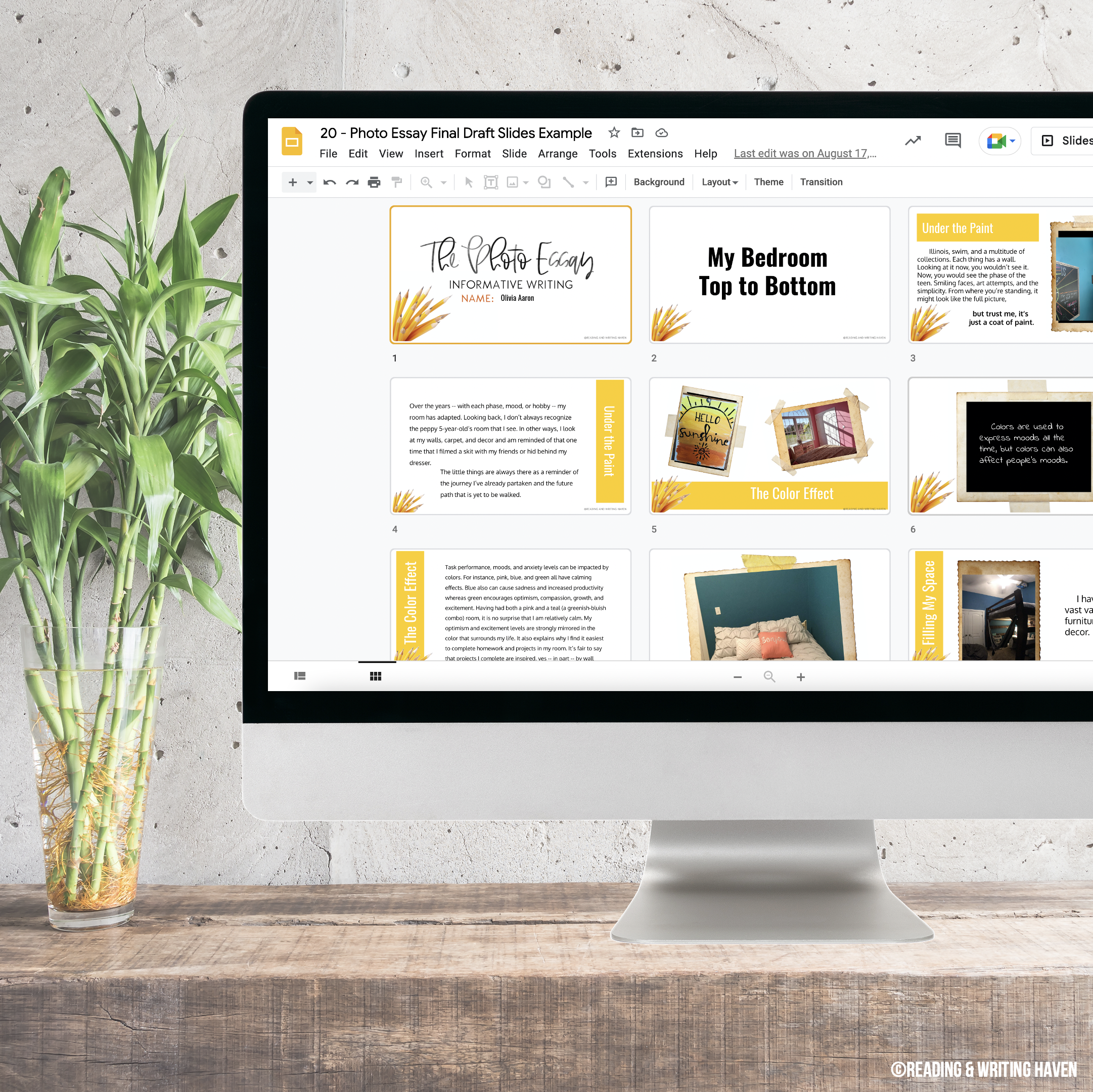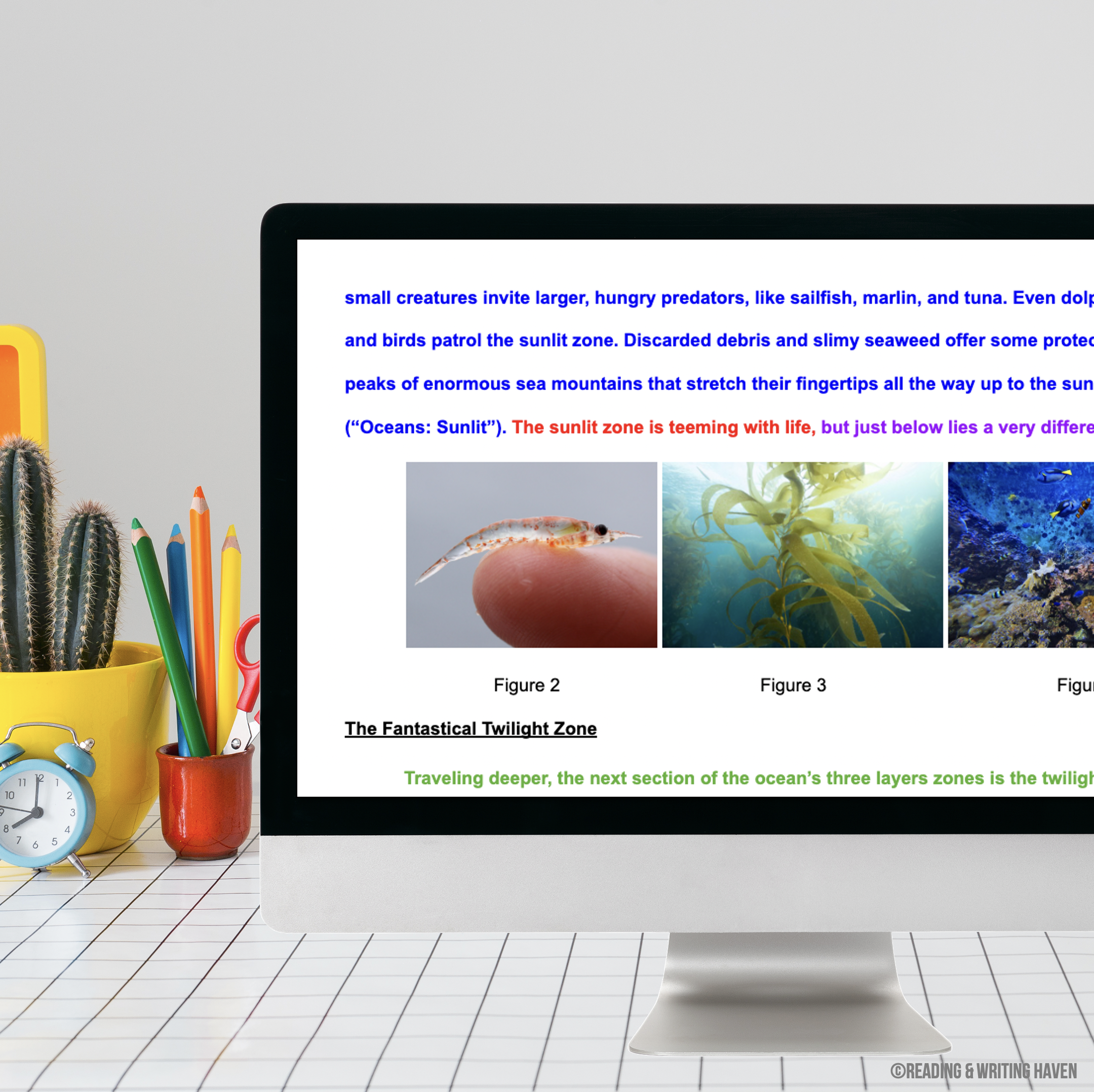Elevating Informational Writing with the Engaging Photo Essay
I won’t lie. In the past, before the words “informational writing” even have left my lips, I’ve had to stifle a yawn. Seeing the upcoming unit approaching in my lesson plans evoked a sense of….mild dread. Boredom.
Surely there’s more to informational writing than biographies and historical context for literature. When I first began teaching, informational essays centered around a person of interest, a cultural trend, a new invention, and Shakespeare’s life and times.
I wasn’t inspired. Students, for the most part, really weren’t either. I needed an overhaul. If you’re also looking for ways to spice up your informational writing unit, stick with me because informative writing just got better.
the PHOTO ESSAY
One of the best ways I’ve found to spice up the mundane informative essay and inspire writers is something I’ve started calling the “photo essay.” A photo essay is typically a way to tell a narrative through images. However, I like using the photo essay in a more subtle and even unexpected way — to communicate information that might otherwise be dry or boring.
Photos are an effective say to enhance what you are saying in writing. That’s why so many sources (magazines, newspapers, blogs, and even television) use photographs. They communicate more than words can in different ways. They can convey mood and elevate understanding and empathy.
Learning how to write photo essays adds an element of flair to typical research writing, which makes students more marketable for future careers.
Let’s explore just a few of the benefits of the photo essay!
ADD PERSONALITY
One timely reason to kickstart our informative writing instruction (or any type writing, for that matter!) with something creative is artificial intelligence. In just over a week since going live, the artificial intelligence website Chat GPT has surpassed a million users. To put that in perspective, it took Instagram two years to reach that number. And, this is just the beginning.
Obviously, many important questions hang in the air. What constitutes cheating now? What's an "original" piece of writing? What are the ethical implications of using artificial intelligence? Can we control it…prevent it? In a digital age, how can we keep teaching and learning relevant and efficient?
We don’t have answers…yet. Artificial intelligence is one of the realities of our times. It may not be what we hoped for when we earned our degrees, but it’s here now, and it’s not going away. We have a choice. We can ignore artificial intelligence and pretend it’s not going to change the way we educate. Or, we could deny that there is any value in it at all. However, those responses don’t address the reality we face, nor do those attitudes serves our students.
Instead, I propose that we start thinking creatively! Artificial intelligence cannot add personality to writing or think outside the box. The type of informative writing I like best uses both.
Take a sneak peek inside my photo essay writing unit by exploring the gallery below!
ADD MULTIMEDIA
The photo essay lends itself well to actual photographs, but that’s not the only visual option students could leverage!
One of the most effective ways to add interest to informational writing is by incorporating multimedia. Writing standards ask students to use multimedia for impact, style, and clarity. Asking students to use elements like graphics, charts, infographics, and photographs requires them to to truly think about integrating information.
With informational writing, students often have research to convey. Research may take the format of statistics, facts, or quotes. All of these can be made more powerful through images!
If students want to write about what it means to be popular in middle school, for example, they may conduct a peer poll. We could craft a sentence that says, “67% of middle schoolers in one study report that people skills lead to popularity.” But, it would be more impactful for our audience if we conveyed that statistic in a pie or bar graph instead.
A student may want to write an informative essay detailing what it’s like to travel out West. What value could be added if the student included photographs to complement the main and supporting points?
Multimedia can benefit readers by adding clarity as well as emotion. Both of these skills are essential for developing writers! Let students experiment with a variety of media types, and you’ll see their interest with informative writing elevate.
INCORPORATE CHOICE
With informative writing, students need inspiration. We can provide that through choice. Angle is one avenue for choice when it comes to writing. Specifically, informative writing is a huge umbrella category, so we can provide options by narrowing it down.
ANGLE
Want to inform people what it’s like to walk down Michigan Avenue? Students could use the angle of a photo walk as a springboard for their writing. Want to explore changes over time? Use images to document the passage of time as cookies bake or as snow melts. Investigating possible careers? Use images to show what a day-in-the-life entails! Document an event, like a special family gathering, or research the significance of a historical landmark. Photographs can also represent the origin, progression, and current situation with a social issue.
STRUCTURE
When it comes to informative writing, students can choose from a variety of text structures. Cause and effect, problem and solution, sequence, compare and contrast, and description are all viable options. Students may choose to mix photographs and other media with their words, or they may prefer to have all of the multimedia in an appendix.
style
The essay is still a highly-regarded genre of writing, but it has strong competitors. Students also benefit from a wide variety of other types of informative writing. Allow students to select from creative options, like a blog post, a newspaper article, or a descriptive infographic, for instance.
With this style of informative writing, students really have to dig into their audience, purpose, and topic. Ultimately, they should be considering this important question: What structure and organization best lends itself to each?
SPARK CREATIVITY
How the “essay” looks can be completely different for each student, which means students’ products are unique and reflective of their personality. This style of creative informative writing is extremely important for twenty-first century writing. In a world of endless scrolling, the most captivating writing will win the audience.
Students will need to consider what program or platform is best for publishing their information. Does it make sense to use Google Docs or Google Slides? Would Canva be better? Some may prefer a Google Site or Adobe Spark page. The possibilities are endless!
The key to the photo essay is inviting students into the thinking process. What do they want to say, and how can they best leverage multimedia to convey that message? How can they write an informative piece that leaves their audience wanting to learn more? We are preparing students for a world of writing where they have to think WAY outside the box to capture their audience’s attention. In a world of artificial intelligence and “entertain me” style mentalities, we have to prepare our students to think in unique and inspiring ways. Their writing needs to move mountains.
Related articles:
spotlight resource
If you’d like to try the photo essay with your students, you can find my unit right here. It will stretch your writers and encourage them to think more critically and creatively than they’ve ever thought before with informative writing.
ABOUT THE AUTHOR
Melissa is the author of Reading and Writing Haven and a collaborative blogger on Teachwriting.org.
A middle and high school English teacher for over a decade now turned instructional coach, Melissa is an avid reader and writer, and she loves sharing ideas and collaborating with fellow educators. Melissa use her degrees in English, Curriculum & Instruction, and Reading as well as her Reading Specialist certification to ponder today’s educational issues while developing resources to help teachers, students, and parents make learning more relevant, meaningful, and engaging.
Visit Melissa on Instagram, Facebook, or Twitter for English teacher camaraderie and practical, engaging teaching ideas.








